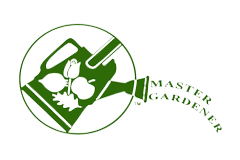by Liza Drozdov – Halton Master Gardener

If you grow Hellebores–and if not, why aren’t you?–at this time of year your Hellebores are a sad sight. Assuming you didn’t cut them back last autumn–and you should not have–you’re looking at a mess of brown, dead leaves with a few green ones buried underneath. It won’t be a promising sight. But if you dig around under the leaves you’ll find the flower buds already emerging.
Hellebores bloom very early in spring and the new flowers and leaves will push their way up through the debris. For best show you need to cut away all of last year’s dead foliage and clear the way. This also will remove any pests that might have overwintered in the mulch and leaves around the plant. Now is the time to do it–before the flowers and new leaves get going or you’ll risk cutting them by accident. It will not harm the plant or the flowers if you cut the dead leaves away as part of your early spring clean up and it’ll make the display that much more lovely.
It’s a very straightforward process to clean up Hellebores in early spring: Carefully pull away any leaves that have blown in since last autumn, exposing the base of your hellebore’s stems.Cut the old leaf stems down as far as you can without harming the crown of the plant–1″ to 2″ is fine. Leaving an inch or two of old stems will help retain dried leaves and mulch around the base of the plant. To protect the plant from drying winds and cold, gently mound some dry leaves back over crown to provide some protection. Flowers and new leaves will emerge through the mulch

Hellebores are very hardy and can withstand freezing temperatures–even while in bloom–without damage to their blossoms. They have thick, leathery leaves that remain evergreen in mild climates. In a less severe winter in Ontario, you’ll find the leaves may stay green, though with some scorching and sunburn/discoloration. It’s best to ensure the leaves remain on the plant for the winter as it does provide protection, but don’t hesitate to cut them back now. It’s one of the tasks you can do when you’re itching to get back out in the garden in early spring.
Hellebores are members of the Ranunculaceae family, along with peonies and clematis, and they are native to Eurasia. They are very hardy and long-lived perennials and they require little care, apart from this spring clean up. Since all parts of the plant are toxic, no garden pests will eat them, including deer and rabbits. They are resistant to pests and disease and even out of bloom their foliage is attractive, providing a great textural contrast to hostas or sedges or native perennials in the shade garden.

Here in Ontario we usually have Hellebores in bloom by April, depending on climatic zone and exposure. The flowers typically tilt down, which is a protection against rain and snow to help preserve their pollen in inclement early spring weather. The true flowers (nectary) are tiny and held in the center of the enlarged sepals–which are attractive to pollinators. Individual blossoms last a very long time in the garden and they provide a food source for early bees, at a time when very few other plants are in bloom. They are an ideal plant for a shade garden, or under deciduous trees where they’ll have full sun until the leaf canopy fills in.
Hellebores need a rich, woodland type of soil with lots of organic matter that remains moist, as they don’t like to dry out. Hellebores are adaptable and will survive in many situations–though they won’t bloom as well or look as good. Feed them annually with compost, manure or leaf mould–they’ll bloom better for it.
Hellebores are long-lived perennials, so make sure you place them where they can remain for years. The plants are deep rooted, so make sure they’ll have a good root run. There’s no need to divide them, and since they resent disturbance anyway that’s one less task for the gardener.
Hellebores will seed if they are in good conditions–and if you lift up the leaves in mid-summer you’ll likely find many tiny seedlings that have sprouted around the mother plant. You must not deadhead the flowers of course, and allow the seed cases to ripen and spill their seeds. Fresh seed germinates very quickly, and you should let the seedlings remain around the mother plant for a year and them feel free to move to another place in the garden, where they’ll bloom in two or three years. While the resulting plants definitely won’t be the same as the parent plant, it’s worth growing them on to see what the blossoms look like. Often they are muddy/ colours not bright and clear. Heavily hybridized, doubles and crosses won’t produce as much seed as species, if any at all.
The simple white species Hellebore is the most common, but breeders have been working for a long time to create hybrids–many of them extravagantly ruffled, doubles and even yellows, reds, acid green and even black, which makes them very collectible plants. You’ll often see them available in the nurseries for sale in early spring, along with forced spring bulbs. They are perfect for spring planters and you can easily move them into a permanent home in your shade garden.

